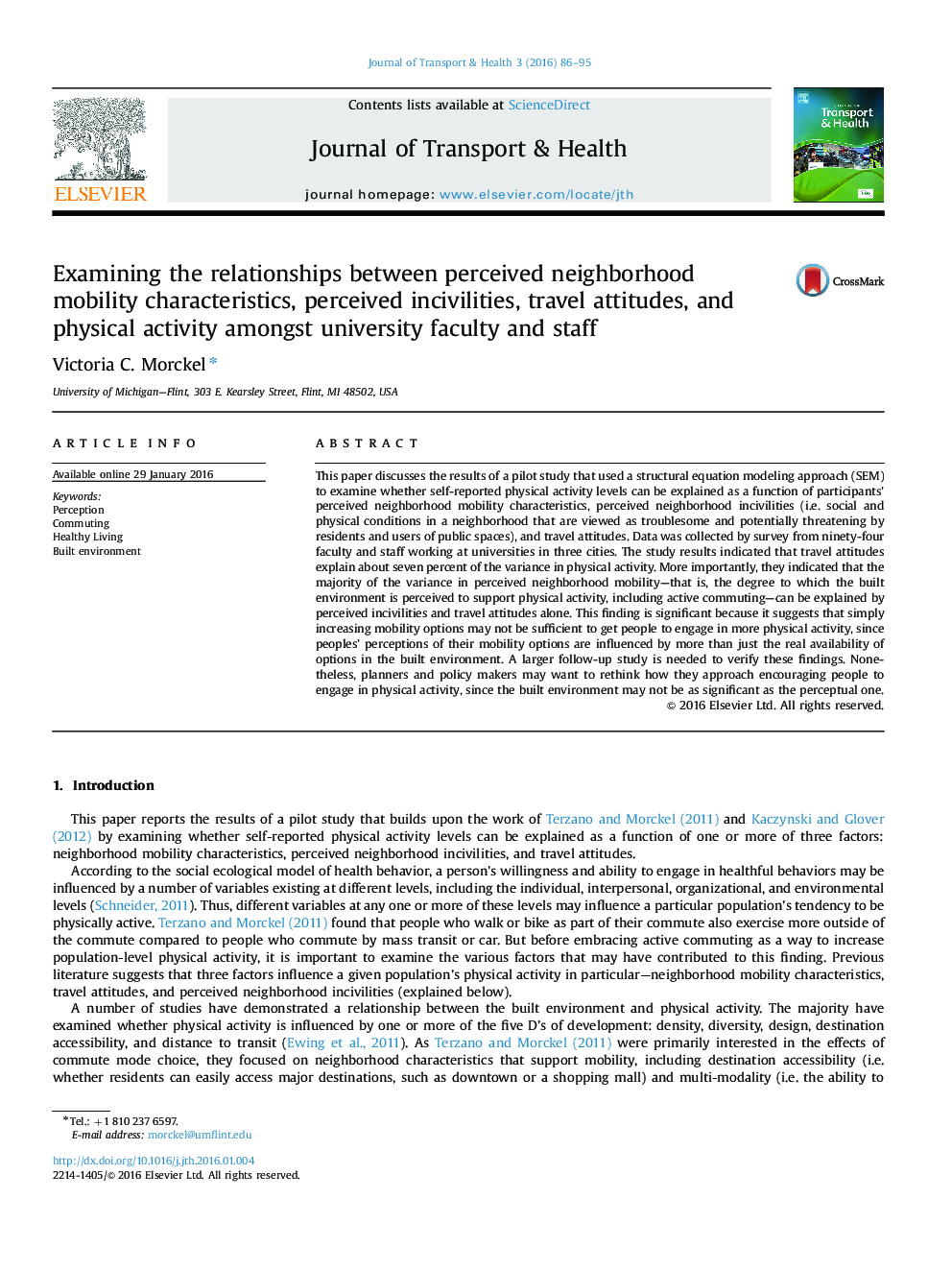| کد مقاله | کد نشریه | سال انتشار | مقاله انگلیسی | نسخه تمام متن |
|---|---|---|---|---|
| 10506656 | 947547 | 2016 | 10 صفحه PDF | دانلود رایگان |
عنوان انگلیسی مقاله ISI
Examining the relationships between perceived neighborhood mobility characteristics, perceived incivilities, travel attitudes, and physical activity amongst university faculty and staff
ترجمه فارسی عنوان
بررسی رابطه بین ویژگی های تحرک محور درک شده، ناسازگاری درک شده، نگرش های سفر و فعالیت فیزیکی در میان استادان و کارکنان دانشگاه
دانلود مقاله + سفارش ترجمه
دانلود مقاله ISI انگلیسی
رایگان برای ایرانیان
کلمات کلیدی
ادراک، مسافرت زندگی سالم، محیط ساخته شده،
موضوعات مرتبط
علوم پزشکی و سلامت
پزشکی و دندانپزشکی
سیاست های بهداشت و سلامت عمومی
چکیده انگلیسی
This paper discusses the results of a pilot study that used a structural equation modeling approach (SEM) to examine whether self-reported physical activity levels can be explained as a function of participants' perceived neighborhood mobility characteristics, perceived neighborhood incivilities (i.e. social and physical conditions in a neighborhood that are viewed as troublesome and potentially threatening by residents and users of public spaces), and travel attitudes. Data was collected by survey from ninety-four faculty and staff working at universities in three cities. The study results indicated that travel attitudes explain about seven percent of the variance in physical activity. More importantly, they indicated that the majority of the variance in perceived neighborhood mobility-that is, the degree to which the built environment is perceived to support physical activity, including active commuting-can be explained by perceived incivilities and travel attitudes alone. This finding is significant because it suggests that simply increasing mobility options may not be sufficient to get people to engage in more physical activity, since peoples' perceptions of their mobility options are influenced by more than just the real availability of options in the built environment. A larger follow-up study is needed to verify these findings. Nonetheless, planners and policy makers may want to rethink how they approach encouraging people to engage in physical activity, since the built environment may not be as significant as the perceptual one.
ناشر
Database: Elsevier - ScienceDirect (ساینس دایرکت)
Journal: Journal of Transport & Health - Volume 3, Issue 1, March 2016, Pages 86-95
Journal: Journal of Transport & Health - Volume 3, Issue 1, March 2016, Pages 86-95
نویسندگان
Victoria C. Morckel,
